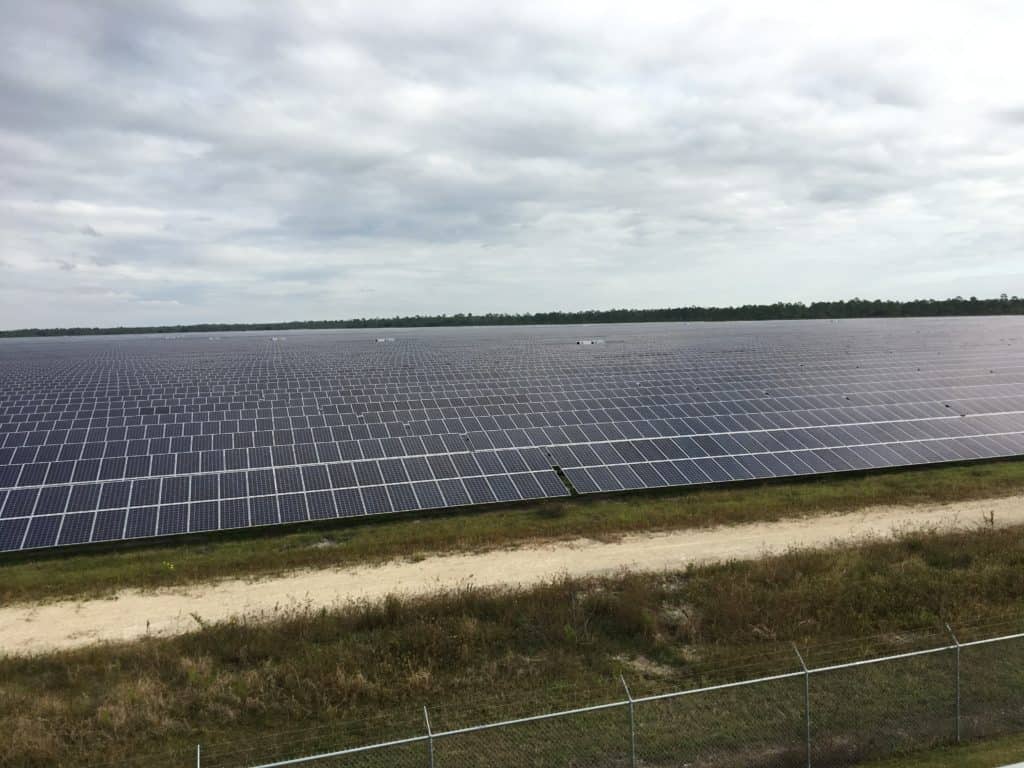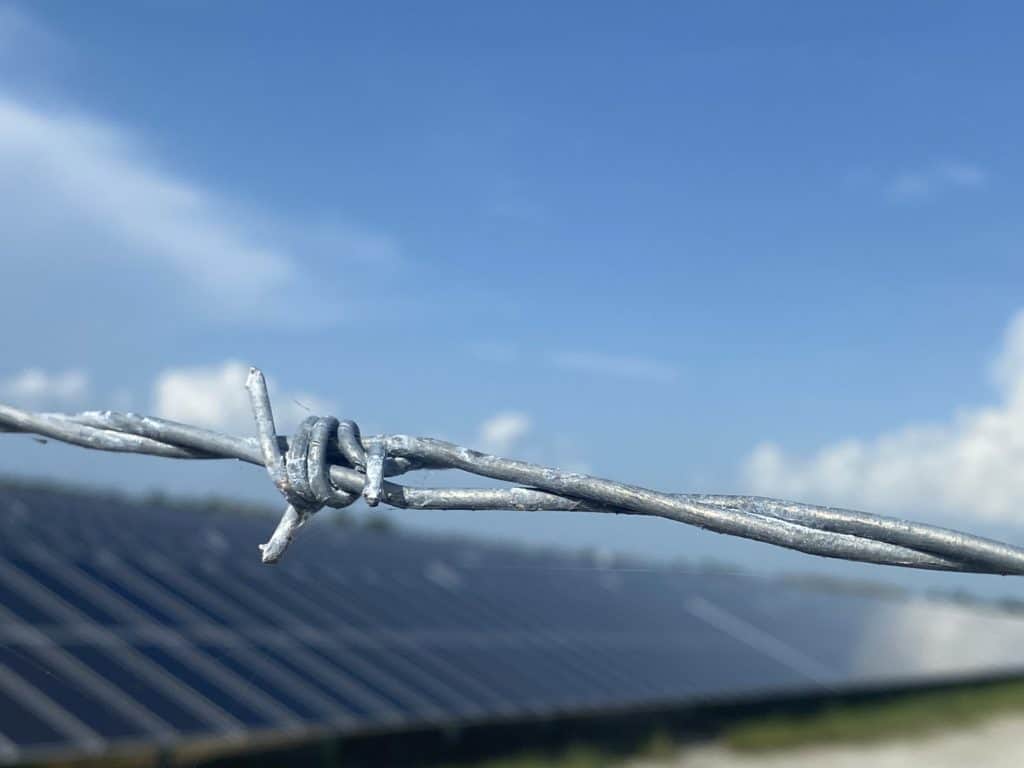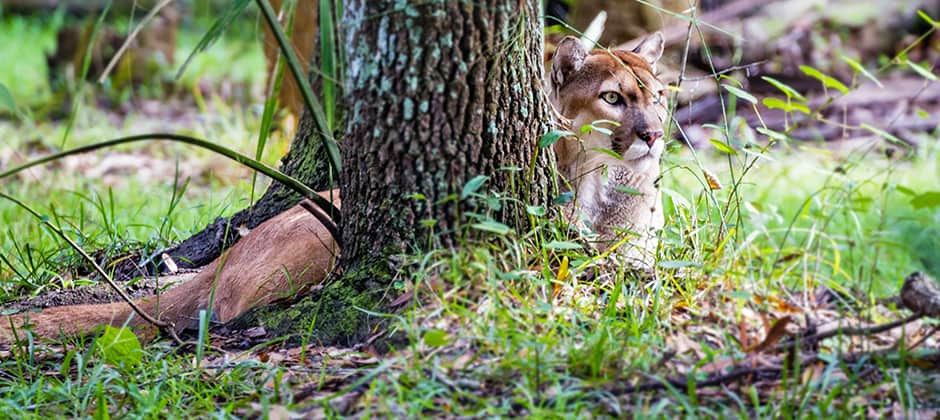Share this article
Solar facilities impede Florida panther movement
Solar energy facilities, meant to provide more environmentally friendly energy, may be negatively impacting an endangered species’ ability to move.
Florida panthers (Puma concolor coryi) were protected under the Endangered Species Act in 1973, one of the first species to be listed. Hunting decimated the population as part of an eradication campaign, but habitat loss and fragmentation continue to impede their movements and limit their numbers.
“These are large carnivores with extensive home ranges, and they are very impacted by any disruption in landscape connectivity because they live at low densities,” said Olena Leskova, a PhD student at the University of Florida. “They’re also an umbrella species, meaning that protecting them benefits the health of an entire ecosystem.”
As a master’s student at Florida Atlantic University, Leskova began to wonder how solar installations, which were increasing in the Sunshine State, were affecting the species.
“As I was reviewing the literature, I didn’t see any studies on impacts of utility-scale solar installations on habitat suitability and connectivity for large carnivores,” she said. The studies she did find were more concerned with impacts within the footprint of the facility, not an entire landscape.
Leskova led a study published in the Journal of Applied Ecology in which she and her colleagues looked to see if multiple solar facilities could inhibit habitat suitability and connectivity for Florida panthers.

A solar panel facility in Florida. Credit: Olena Leskova
She and Scott Markwith, her academic adviser at FAU, teamed up with Robert Frakes, a researcher who had used telemetry data to develop a habitat suitability model for the species. Combining that model with publicly available data on where solar facilities were planned or already installed, they compared habitat suitability and connectivity before and after installation.
The researchers found that overall habitat suitability and connectivity for Florida panthers decreased after the facilities were installed. The largest impacts resulted from nine facilities in important corridors that linked a single breeding population with important resources.
Four facilities were installed or planned within or adjacent to suitable habitat, the study found. Twenty-six others were in rural areas that potentially could have supported connectivity between areas of suitable habitat. Only six facilities had no—or minimal—impact on habitat suitability or connectivity.
The team found that most of the 45 large solar facilities planned or installed as of November 2019 were sited on grasslands, prairies and pastures—a total of almost 13,000 acres. That raises concerns, Leskova said, because panthers rely on those permeable areas to move between habitats. Another 3,600 acres of forest—where panthers hunt, rest and establish dens—were replaced by solar facilities.
“Our study shows that these land covers are targeted by energy companies,” she said.
Conditions are improving at some facilities, Leskova said. Some newer ones have lower, wildlife-friendly fences—instead of high fences with barbed wire—that panthers can get over to move between areas. But that doesn’t address the landscapes lost to construction, she said. “When we talk about replacing forest with solar arrays, it’s an impact that cannot be mitigated by lower fences.”

Fencing and barbed wire around solar facilities can reduce habitat connectivity for Florida panthers.
Credit: Olena Leskova
Leskova hopes this research helps with future decisions to install solar facilities. “More solar facilities are going to be installed,” she said. “That’s our future. The point of this paper is to inform decision-makers about environmental costs that may come with current siting strategies. As we transition to solar energy, it is important to keep in mind other environmental issues, such as biodiversity loss.”
Header Image: Florida panthers have extensive home ranges that have been interrupted by development, including solar power facilities. Credit: Florida Atlantic University/Gerry Images








